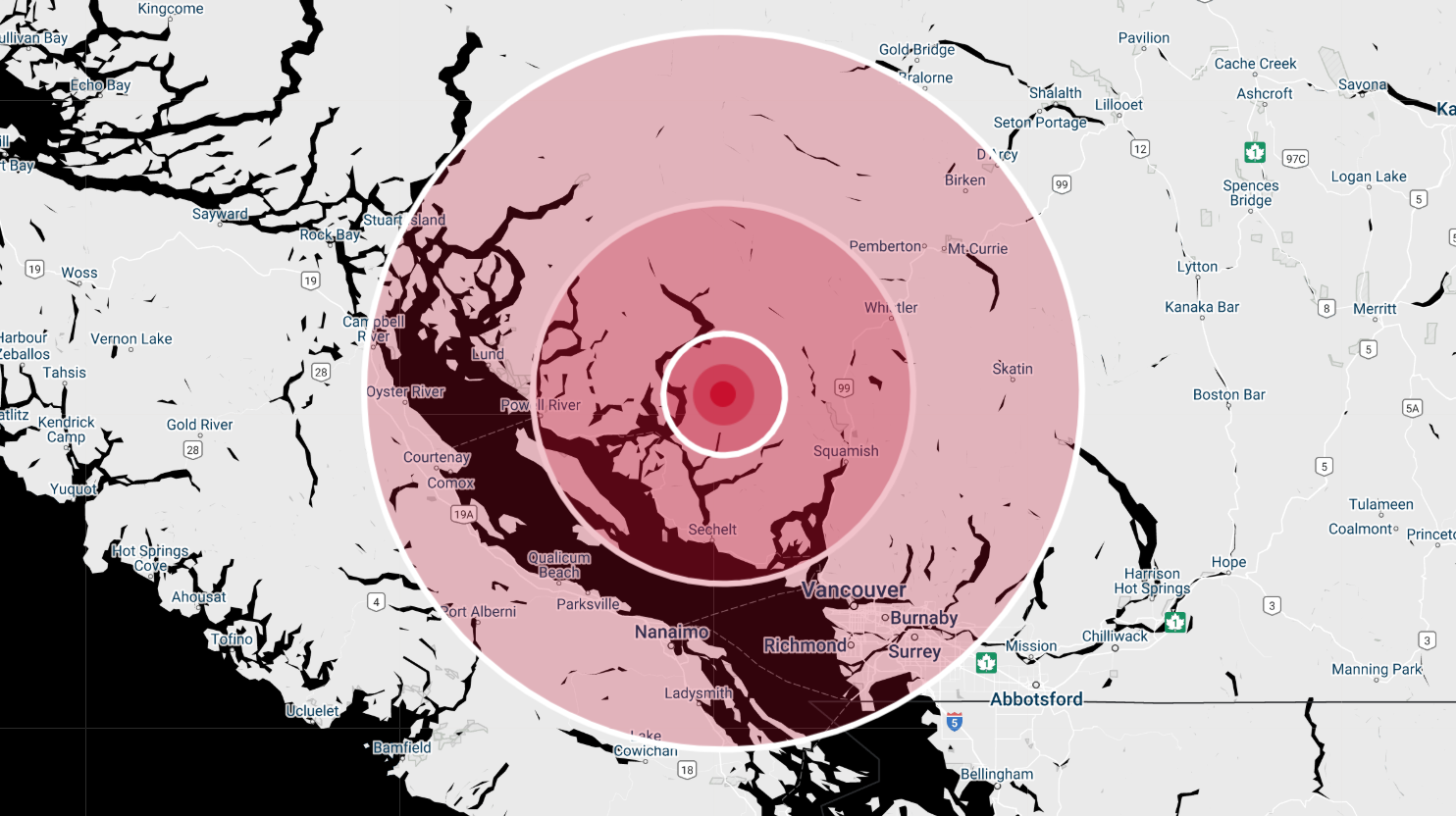Canada
5.1 magnitude earthquake felt across Vancouver area

An earthquake northwest of B.C.’s Sunshine Coast rumbled across the Lower Mainland Friday afternoon.
Earthquake Canada says an automatic Earthquake Early Warning was issued for the event at 1:26 p.m. It says the quake hit little more than 20 kilometres northwest of Sechelt.
Callers to 1130 NewsRadio say it was felt all around B.C.’s Sunshine Coast and Lower Mainland.
Emergency Info BC says the U.S. National Tsunami Warning Center confirmed there is no danger of tsunami, and says “there are no reports of damage at this time.”
Vancouver Fire Rescue Services says it has received no reports of damage or injuries related to the earthquake.
Firefighters say the event acts as a “real time reminder of the importance of earthquake preparedness and readiness for everyone in Vancouver.”
The Vancouver School Board says all schools are following their practiced earthquake procedures.
“We have not received any reports of injuries and school will continue as usual,” the board said on social media.
E-Comm, the province’s 911 operator service, issued a reminder to residents that 911 is reserved for “life-threatening emergencies only,” amid an unconfirmed increase in call volume Friday afternoon.
In a statement to CityNews, BC Emergency Health Services say it is not aware of any calls related the quake.
Many residents reported not receiving the warning that was sent as an alert to some smartphones in the area.
In an interview in September last year, Alison Bird, a Vancouver Island-based seismologist with Natural Resources Canada (NRC), told 1130 NewsRadio that the system is known as the Canadian National Public Alerting System (NPAS), and it works — most of the time.
The idea is that Canadians would get a warning before the arrival of powerful shaking, known as the S wave.
“Two main waves that come out from an earthquake. The really fast one is the P wave, the primary or pressure wave that’s very much like a soundwave. It’s usually the initial jolt or rumble you might experience, and that’s not usually very harmful,” she explained.
“The sensors pick up that data, process the data very quickly, and then we send out the alert, and that’s before the slower but more damaging S wave arrives — that’s the shear wave, that big side-to-side motion that tends to cause damage.”
The alert would go out to people in the area of an earthquake, including those visiting the province, but there’s a gap in the coverage.
“If you’re very close to the epicentre, you may not receive the warning in time. It’s just not physically possible to get the alert to people within that close epicentral region. You’ll get the alert after the shaking or during the shaking,” she explained.
This means the further away you are from the epicentre, the more warning you’ll have.
One expert says now is a good time to get prepared for future earthquakes.
Jay Lewis, president of Terra Firm Earthquake Preparedness, says the best bet is to have a ‘go bag’ with supplies ready.
“Preferably near a door that’s going to still be in good shape when the shaking stops,” Lewis explained. “But that would give you food and certain emergency materials, including some first aid and so on.”
Lewis adds aftershocks can be common but also unpredictable.
He says infrastructure in the Lower Mainland, including in hospitals and schools, is “way behind” on preparedness.
“This has to be brought to the fore again,” said Lewis. “In the past, it was parent groups at schools that got [seismic preparedness issues] going. But frankly, in the last few years, everything has come to a slow standstill.”
B.C. is one of Canada’s most seismically active regions, with roughly 400 earthquakes each year along the southwestern coast.
This is a developing story. More to come.
—With files from Sonia Aslam and Michael Williams
